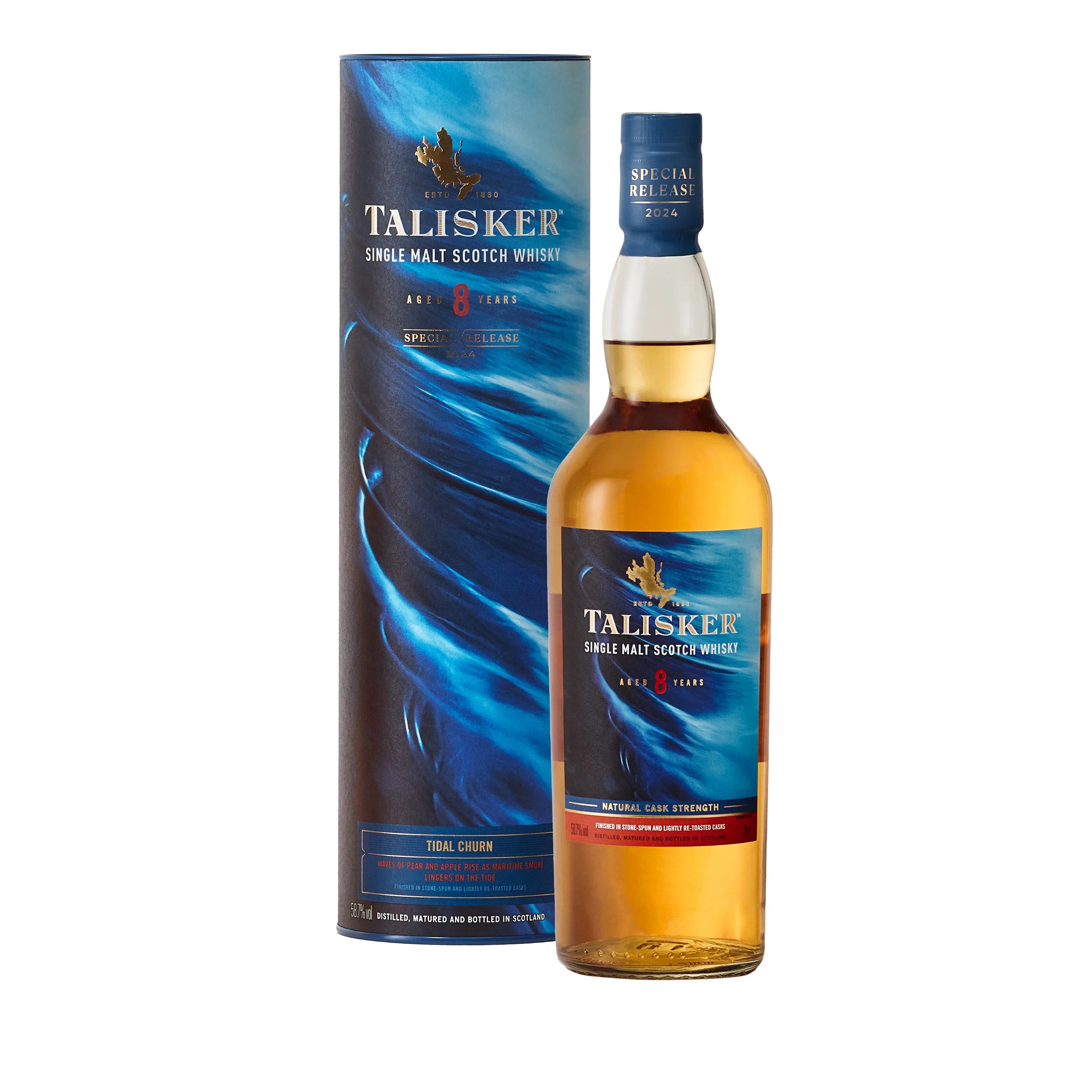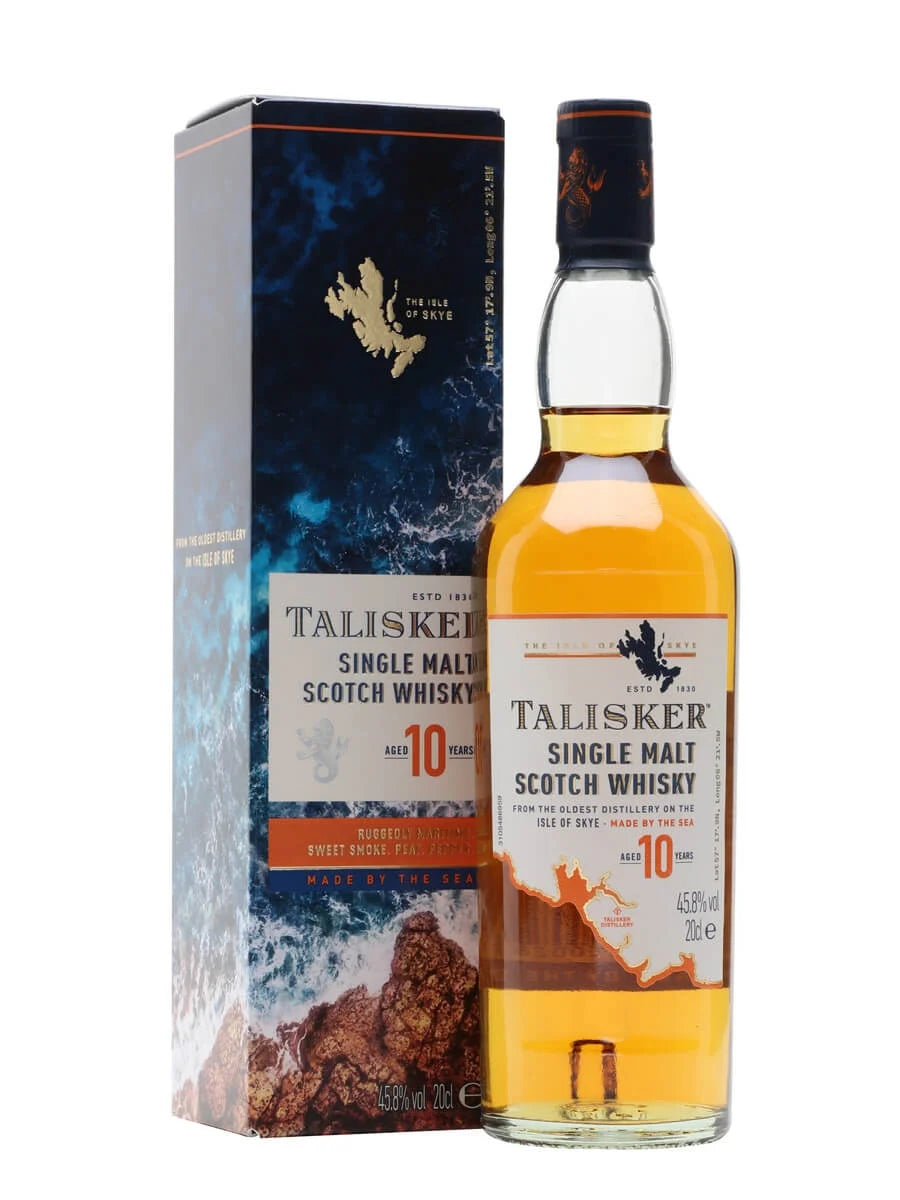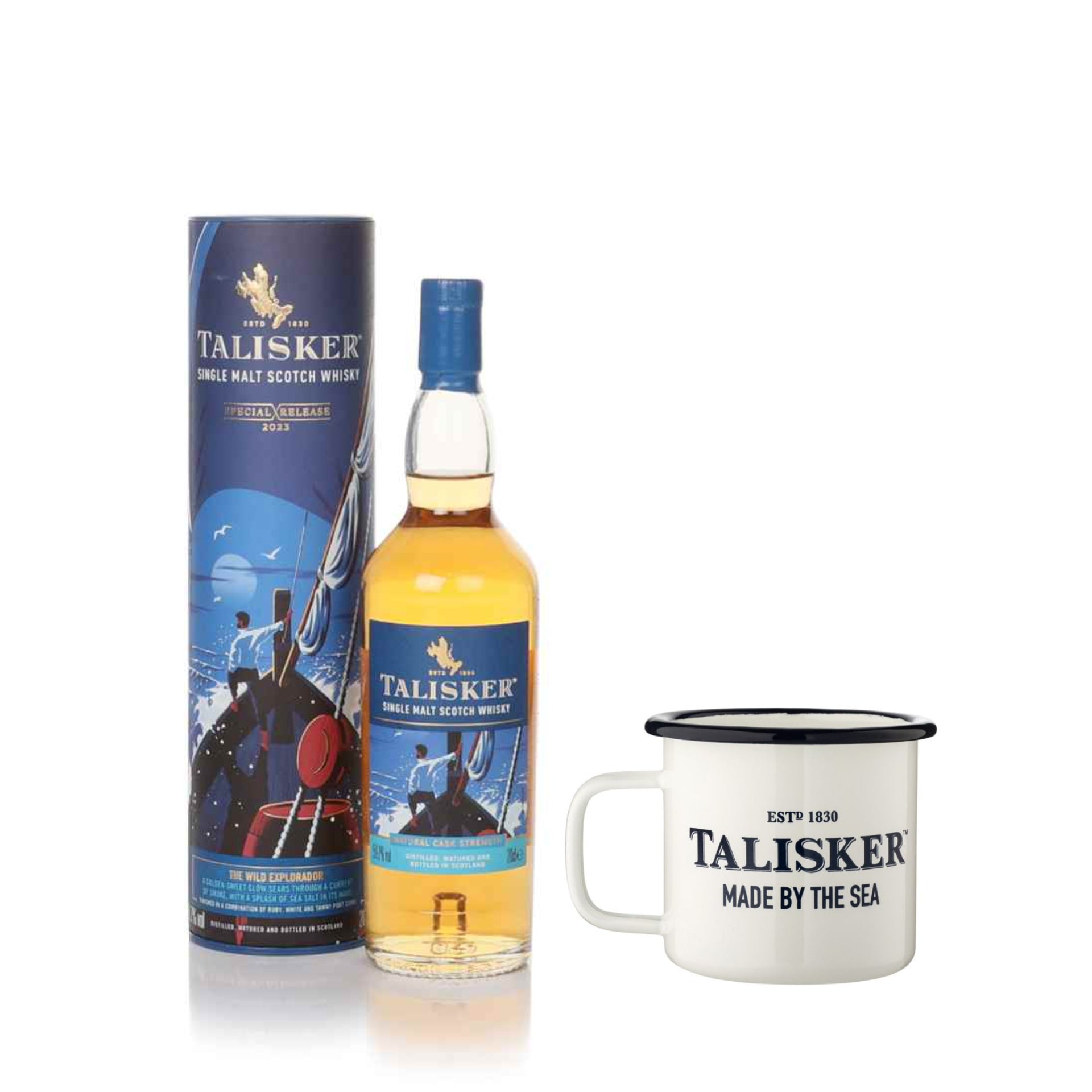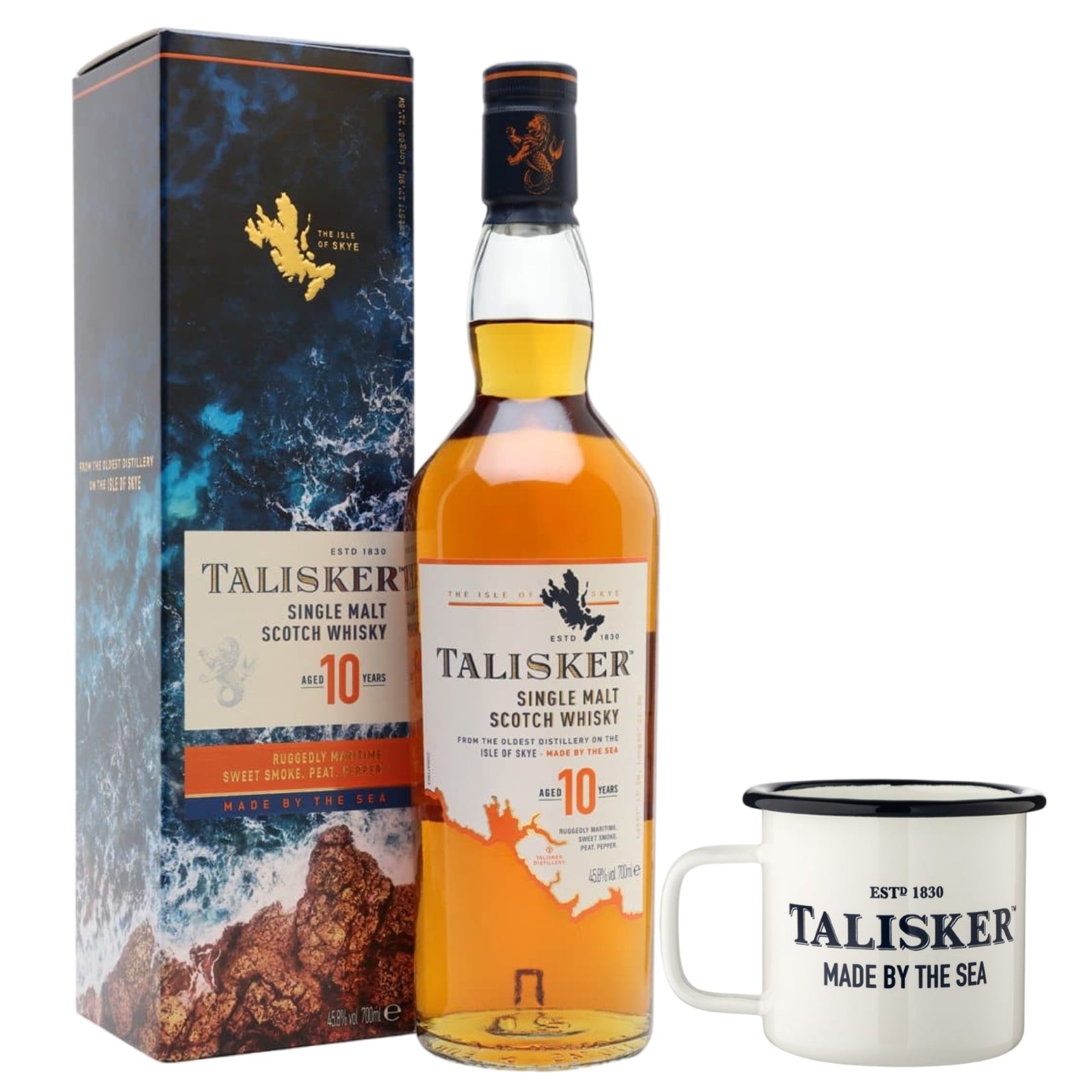Choose your Talisker bottle

The Origin of Talisker
Established in 1830 by Hugh and Kenneth MacAskill, Talisker distillery is nestled in a sheltered bay in the small village of Carbost on the Isle of Skye. The MacAskill brothers, originally from the Isle of Eigg, acquired the land and began the journey of what would become one of the world's most renowned single malts.
Initial Challenges
The early years of Talisker were fraught with challenges, including disagreements with the landlord and an 1960 fire that devastated the distillery. However, the resilient spirit of Talisker saw it being rebuilt and it resumed production a year later.

The Unique Flavor Profile
Talisker is famed for its maritime character, with its signature peppery finish often described as a "kick" by enthusiasts.
Tasting Notes for Talisker Skye
Talisker Skye is imbued with notes of citrus, smoky vanilla, and a hint of pepper. It's slightly sweeter than other Talisker expressions but retains that distinctive maritime and peppery finish.

The Mission of Talisker
Talisker's objective has always been to produce top-quality Scotch that is a true reflection of its origins. The distillery prides itself on its traditional methods, from the wooden washbacks to the copper pot stills, ensuring every drop captures the essence of Skye.
The Geography and Influence
The Isle of Skye, with its wild seas, rugged terrain, and changeable weather, plays an instrumental role in shaping the whisky. The water, sourced from the nearby Cnoc nan Speireag (Hawk Hill), imparts its own unique character to the spirit.

Commitment to Craftsmanship
One of the distillery’s unique features is its traditional malting floor, one of the few still in operation in Scotland. Here, barley is turned by hand, a time-honored process that ensures even germination and contributes to the whisky’s distinctive flavor.
The local peat, used in the malting process, is dense and aromatic, giving Highland Park whiskies their gentle smoky character. This peat burns slowly, allowing the barley to absorb its rich flavors.




























